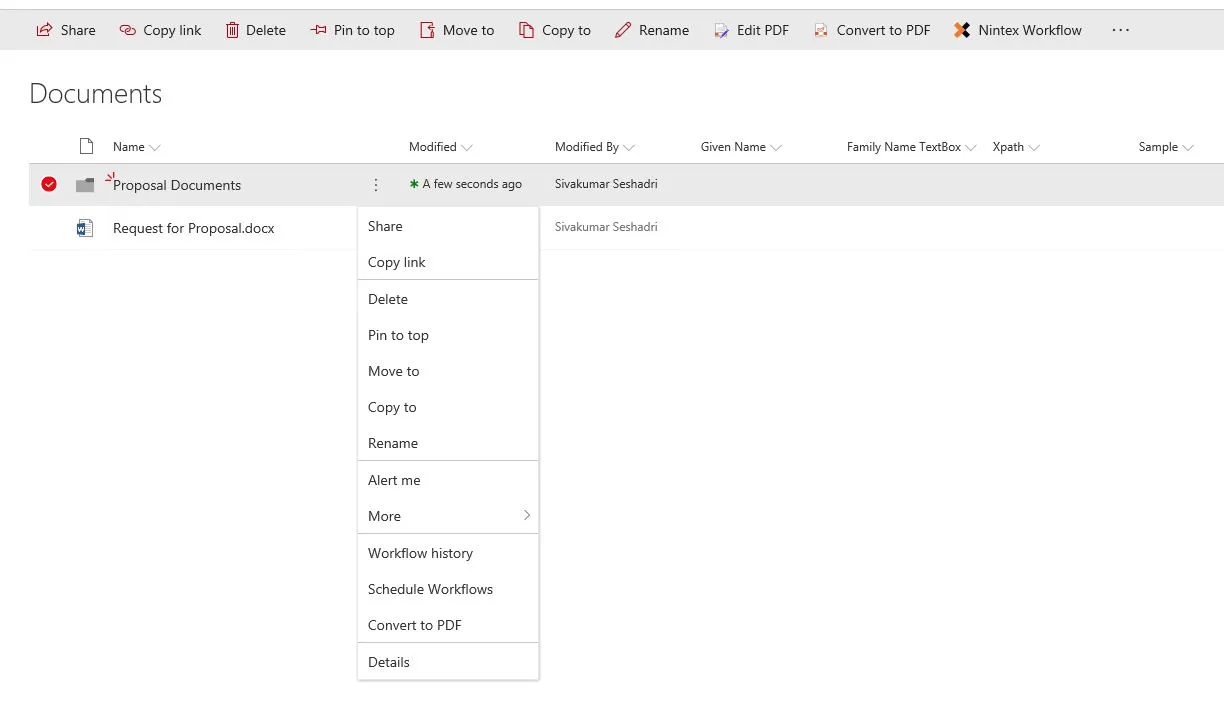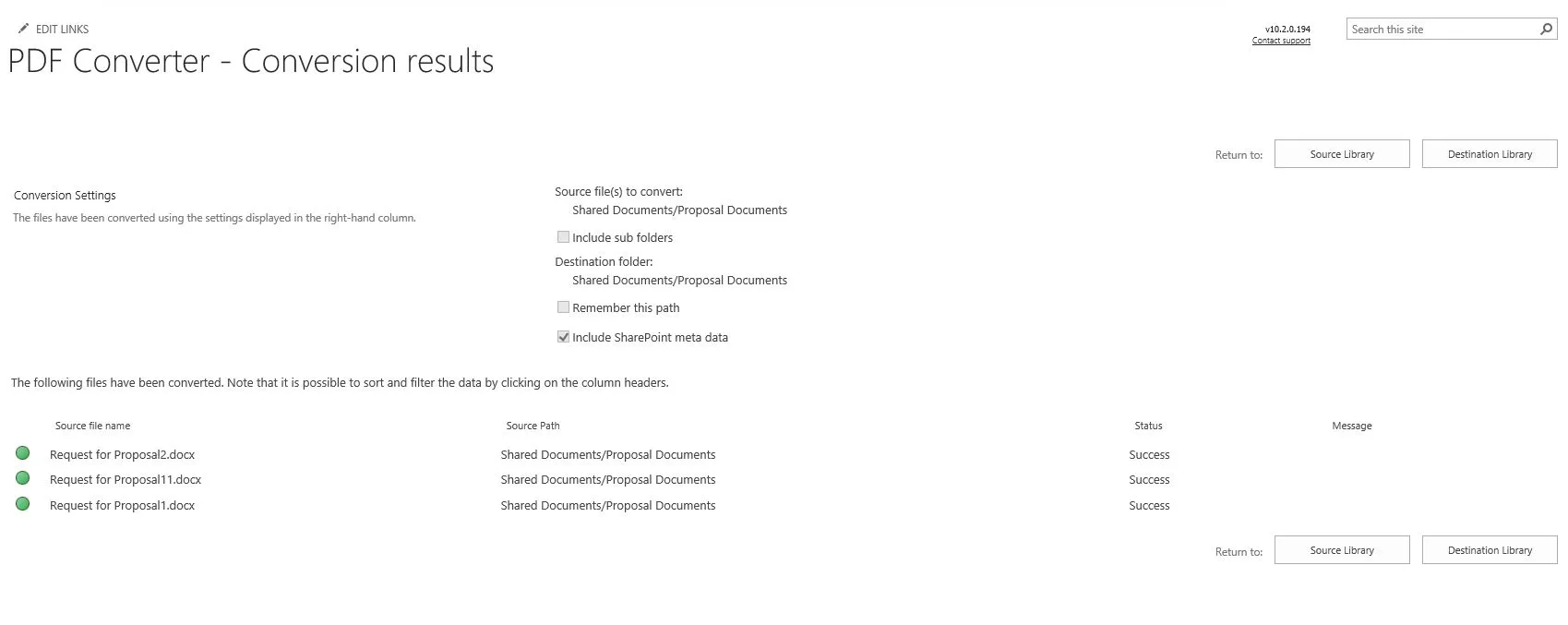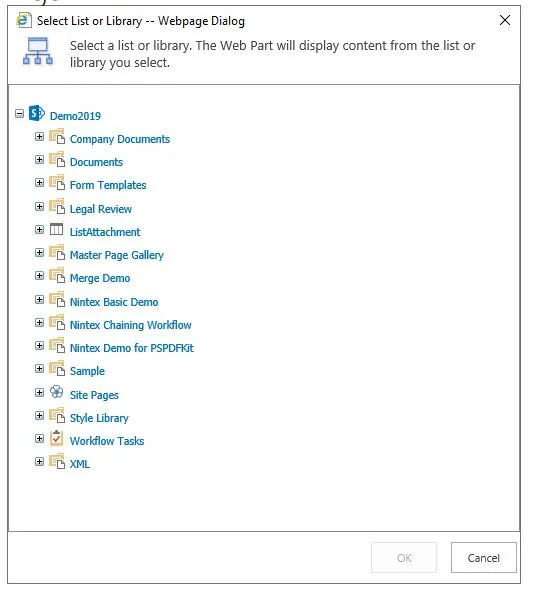Merge documents to PDF in SharePoint
In this guide you’ll learn how to combine and merge multiple files to PDF using the SharePoint UI. The guide covers two scenarios: merging an entire folder and merging a document library in SharePoint. It also provides instructions on how to save your merged files into a different location within SharePoint.
Merging an Entire Folder
You can merge files in an entire folder to PDF, by performing the following steps:
Navigate to the Document Library that contains the files to merge..
Open the context menu, and then click Convert to PDF.

Conversion Settings Page is displayed. You can review the merge order in this page and click Convert.

Conversion results Page is displayed. You can review the results in this page to check if the merging has been successful and without any errors.

Click Destination Library to navigate to the directory containing the merged PDF file(s).
Note: When using the Document Converter with MS SharePoint 2010 (or later), you can merge the files by selecting it and selecting Convert to PDF in the Ribbon. The Download as PDF feature does not work for folders.
Merging an Entire Document Library (MS SharePoint 2007)
This section is only valid for MS SharePoint 2007.
Although it is possible to merge documents of an entire document library (MS SharePoint 2007) in one go, it may take a long time to complete, or even time out, if the library contains many files. You will automatically receive a warning if many files are in the library.
You can merge the files available in an entire Document Library to PDF by performing the following steps:
Navigate to the root folder of the document library containing the file to merge.
Select Convert to PDF from the Actions menu.
Note: This option is only available in MS SharePoint 2007.

Specify if you want to convert subfolders as well.
Review all the other settings, especially the merge order and click Convert button to start the merging process.
Verify the files have been merged without errors.
Click Destination Library to navigate to the directory containing the merged PDF files.
Note: If you are using MS SharePoint 2010 or above, select all files and use the Convert to PDF option in the Ribbon instead, as this option is only available in MS SharePoint 2007.
Saving the Merged File to a Different Location
By default, the merged PDF files are saved to the same folder in which the source files are located. However, as discussed above, it is possible to specify a different folder, document library, site, or even a different site collection to save the merged PDF files.
To specify a different folder, open the PDF Conversion screen and select the destination folder. When the site is hosted on a SharePoint server rather than the free Foundation server, a user-friendly Browse button is available, allowing folders or sites to be selected within the current site collection.

Browse for a destination folder (Commercial versions of SharePoint only)
If the Browse button is not available or the destination folder is located in a different site collection, then you will need to enter the destination path manually. The format is as follows:
A folder in the current site collection: Document Library Name/Folder path.
E.g. – Shared Documents/PDF FilesA folder in the different site collection: Absolute path to Site Collection/Document Library Name/Folder path.
E.g. – /sites/Press Office/Shared Documents/PDF Files
Note: Do not include ‘http://’ and the domain name in the absolute path. An absolute path always starts with ‘/’.
If the files are always written to the same directory then it may be a good idea to select Remember this path to automatically default to whatever custom path was last entered.
Note: These settings are remembered per user and stored at the Site collection level.
Clearing the ‘Remember this path’ checkbox will automatically forget the settings during future conversions.
Note: Document Sets can be used as a source as well as a destination for PDF Conversion. They work exactly the same as folders.
Further operations such as applying watermarks andPDF security can be carried out as a post processing step using simple workflows.
Please note that the maximum number of files that can be merged is 200. You will automatically receive a warning message when this threshold is exceeded..